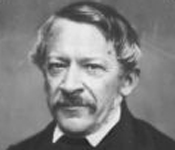Discovery Of Binaural Beats

I will say that I have personally done an incredible amount of research and marketing on the effects of binaural simulations.I brought them to masses and commercialized them on a global level through my innovative work with I-Doser.com, BUT I did not discover them. Who did, when, and why? The answer will surprise you. Binaural beats were discovered in 1839 by a German experimenter, H. W. Dove.
- Heinrich Wilhelm Dove (October 6, 1803 – April 4, 1879) was a Prussian physicist and meteorologist. He was the father of Alfred and Richard Dove.
- Dove was born in Liegnitz. Dove studied history, philosophy, and the natural sciences at the University of Breslau from 1821 until 1824. In 1824 he continued his education at the University of Berlin, finishing in 1826. In 1828, he became an associate professor at the University of Königsberg; the following year assumed an associate professorship at the University of Berlin.
- In 1845 he became a full professor at the Friedrich-Wilhelms-Universität, where he was elected rector in 1858–1859, and again in 1871–1872.) In 1849 he also became the director of the Prussian Meteorological Institute.
- During his career he published more than 300 papers, some of which delved into experimental physics. He also had an important influence over the science of meteorology, and was considered by some to be a pioneer in this field; Dove’s primary meteorological focus was in climatology, a field pioneered by Alexander von Humboldt.
- In 1828, Dove observed that tropical cyclones rotate counterclockwise in the Northern Hemisphere, but clockwise in the Southern.
- In 1839 he discovered the technique of binaural beats, whereby slightly different frequencies played separately to each ear produced a perception of interference beats at the same rate as would be physically created.
- He also studied the distribution of heat over the surface of the Earth, the effect of climate on the growth of plants, and was the first to measure the strength of an electrical current in a wire induced by a collapsing magnetic field.
H. W. Dove found that the human ability to “hear” binaural beats appears to be the result of evolutionary adaptation. Many evolved species can detect binaural beats because of their brain structure. The frequencies at which binaural beats can be detected change depending upon the size of the species’ cranium. In the human, binaural beats can be detected when carrier waves are below approximately 1000 Hz (Oster, 1973). Below 1000 Hz the wave length of the signal is longer than the diameter of the human skull. Thus, signals below 1000 Hz curve around the skull by diffraction. The same effect can be observed with radio wave propagation. Lower-frequency (longer wave length) radio waves (such as AM radio) travel around the earth over and in between mountains and structures. Higher-frequency (shorter wave length) radio waves (such as FM radio, TV, and microwaves) travel in a straight line and can’t curve around the earth. Mountains and structures block these high-frequency signals. Because frequencies below 1000 Hz curve around the skull, incoming signals below 1000 Hz are heard by both ears. But due to the distance between the ears, the brain “hears” the inputs from the ears as out of phase with each other. As the sound wave passes around the skull, each ear gets a different portion of the wave. It is this waveform phase difference that allows for accurate location of sounds below 1000 Hz(9). Audio direction finding at higher frequencies is less accurate than it is for frequencies below 1000 Hz. At 8000 Hz the pinna (external ear) becomes effective as an aid to localization. In summary it’s the ability of the brain to detect a waveform phase difference is what enables it to perceive binaural beats.
There have been numerous anecdotal reports and a growing number of research efforts reporting changes in consciousness associated with binaural-beats. “The subjective effect of listening to binaural beats may be relaxing or stimulating, depending on the frequency of the binaural-beat stimulation” (Owens & Atwater, 1995). I-Doser.com is the industry leader in the research of binaural brainwaves and altered states.
TO ALL OUR READERS, today we humbly ask you to help our little blog. For over ten years now, BinauralBlog.com has been producing fantastic mindfulness articles. We do not beg for donations, use any intrusive popups, sell any form of user data, or fill our content with ads. How do we sustain ourselves? We need shares, plain and simple. The time has come for us to make a simple request. Please, if you enjoyed this article and want us to keep producing content - use any (or all) of the CIRCULAR SHARE BUTTONS ABOVE to help support our little blog. Thank you from the Binaural Blog, Founder & Team

Who wrote this article?